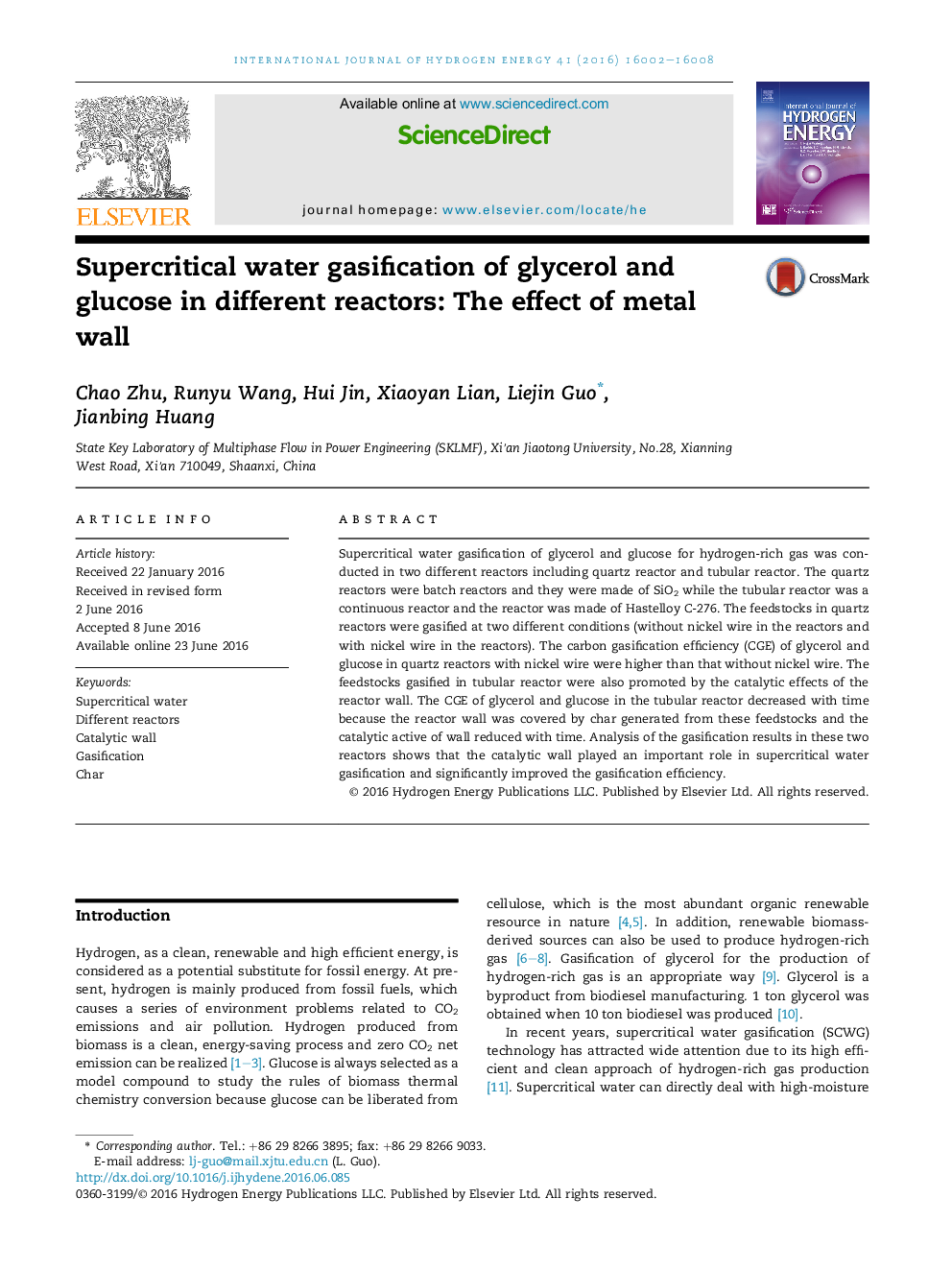| Article ID | Journal | Published Year | Pages | File Type |
|---|---|---|---|---|
| 5147868 | International Journal of Hydrogen Energy | 2016 | 7 Pages |
Abstract
Supercritical water gasification of glycerol and glucose for hydrogen-rich gas was conducted in two different reactors including quartz reactor and tubular reactor. The quartz reactors were batch reactors and they were made of SiO2 while the tubular reactor was a continuous reactor and the reactor was made of Hastelloy C-276. The feedstocks in quartz reactors were gasified at two different conditions (without nickel wire in the reactors and with nickel wire in the reactors). The carbon gasification efficiency (CGE) of glycerol and glucose in quartz reactors with nickel wire were higher than that without nickel wire. The feedstocks gasified in tubular reactor were also promoted by the catalytic effects of the reactor wall. The CGE of glycerol and glucose in the tubular reactor decreased with time because the reactor wall was covered by char generated from these feedstocks and the catalytic active of wall reduced with time. Analysis of the gasification results in these two reactors shows that the catalytic wall played an important role in supercritical water gasification and significantly improved the gasification efficiency.
Keywords
Related Topics
Physical Sciences and Engineering
Chemistry
Electrochemistry
Authors
Chao Zhu, Runyu Wang, Hui Jin, Xiaoyan Lian, Liejin Guo, Jianbing Huang,
